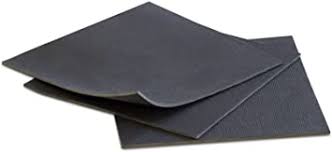Foam Rubber vs. Sponge Rubber – Understanding the difference
For technical buyers, the difference between foam and sponge rubber is important to understand. After all, most materials are selected based on their functionality, but safety is also an important consideration. For example, there are some silicone foams that meet the set FST standards for the mass transit industry, but most of the carbon black foams will fall short of these requirements.
The Manufacturing Process for Foam Rubber
According to information from California Industrial Rubber Co., foam rubber uses a chemical or gas called a “blowing agent” to create gas. This creates small bubbles that appear in a liquid mixture. The mixture is usually made up of colorants, fillers, polyols, flame retardants, polyisocyanates, and water.
Polyisocyanates and polyols are both a type of liquid polymer. This means when they are combined with water, they will create a heat-generator or exothermic reaction. By mixing and combining several types of liquid polymer’s foam rubber manufacturers produce rigid or flexible foam rubbers.
The process that this occurs through is called polymerization. This is the point when the molecules from the polyisocyanates and polyols will crosslink and create three-dimensional structures. The entire process occurs in the compounder, which controls the foaming level by adjusting the surfactants in the mixture and water.
The Manufacturing Process for Sponge Rubber
Sponge rubber is created in a similar process to foam rubber. However, it comes in two different densities – closed cell and open cell.
With a closed-cell sponge rubber, there are holes in the material, but each hole is separate from the others. This creates a dense material that is full of small vacuums. With open-cell sponge rubber, there are several open holes that let the air fill into the material. This makes the material much less dense and it is more affordable to manufacture because it does not have as much material in each square meter. Instead, there is air.
Creating open sponge rubber requires the use of several ingredients that are mixed and then heated in a mold. At this point, sodium bicarbonate will be added. The sponge, which is uncured, will then rise, like a cake, creating interconnected bubbles.
For closed-cell rubber, a chemical powder is used. When exposed to heat, the material will decompose. The pressure is then added to the mix and nitrogen gas will be produced. This creates the closed cell sponge rubber’s strength and density.
Deciding Between Sponge Rubber and Foam Rubber
When it is time to purchase a rubber option for manufacturing processes or other needs from https://www.cir.net/, finding the right option is essential. Be sure to keep the information here in mind to make the right decision regarding what type of foam is needed – sponge rubber or foam rubber. Both have inherent benefits, which will help ensure the desired results are achieved when the product is used.
Don’t underestimate the benefits of buying from a reputable buyer, either. This is going to ensure the high-quality product needed is purchased and that it suits the needs they have for the way the product will be used. For more information on what’s available to purchase, visit https://www.cir.net/contact-us/ today.
Media Contact
Company Name: California Industrial Rubber Co.
Contact Person: Media Relations
Email: Send Email
Phone: 559-268-7321
Country: United States
Website: https://www.californiaindustrialrubber.net/


